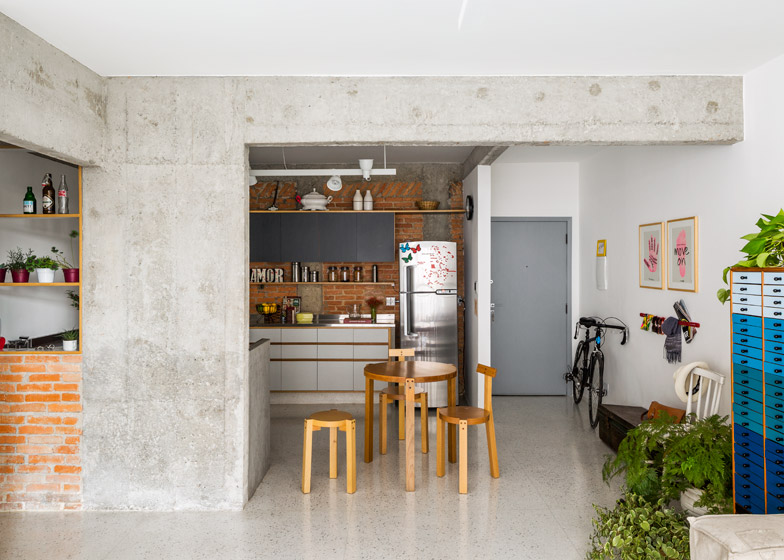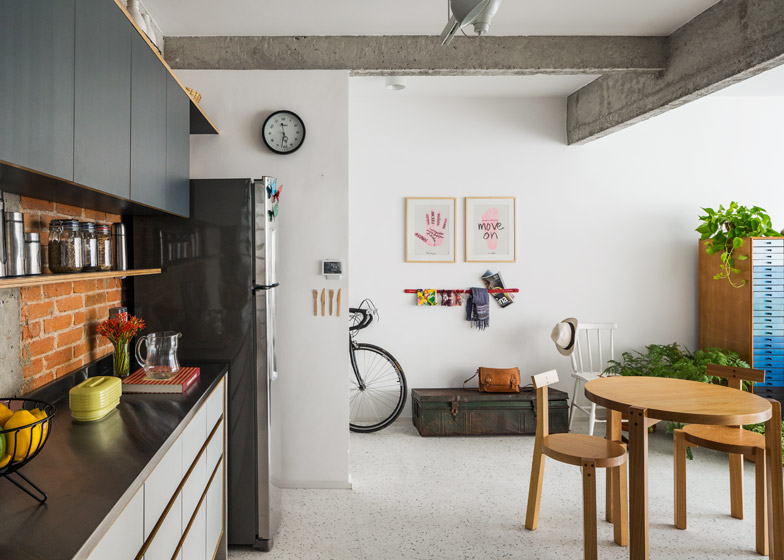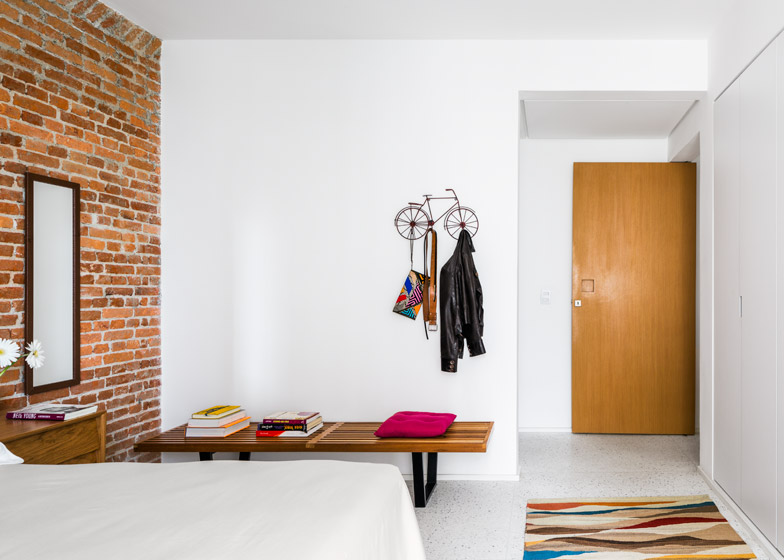Brazilian firm Vitrô Arquitetura has renovated a 1960s apartment in São Paulo, revealing structural concrete pillars and brickwork walls (+ slideshow).
Aiming to create better circulation in the home, named Pompeia apartment, the architects decided to modify the original floor plan – which created a largely segregated space with lots of separate rooms.
"We wanted to make the apartment suitable for nowadays," said Vitrô architect Nathália Favaro. "We applied a continuous circulation that directly connects social, intimate and service areas."
The studio began by demolishing the walls separating the entrance, living room and kitchen area to open the space up and create a single large room.
"The kitchen was dark because of the main wall that used to divide it from the living room," Favaro told Dezeen. "Throughout the day, the sun that comes in from the windows in the living room couldn't pass."
Two existing bathrooms were redesigned to better suit the client's needs, while a third room was transformed into a closet for the master bedroom that is situated to the left of an office space.
Red-toned brickwork and concrete pillars uncovered during the renovation process were left exposed. This gives the home a slightly unfinished look – an effect also recently created at a converted Antwerp warehouse and a Japanese gallery.
"The idea of making them a feature came immediately," Favaro said. "They guided our choice of other finishes around the apartment."
In the bathroom, a concrete slab forms a long sink and shelving system, while hexagonal yellow tiles from the existing design remain in place across the floor. Matt-finished cupboard fronts in monochrome colours contrast with a brick wall in the kitchen.
Original wooden flooring has been replaced by granilite – a smooth-surfaced material made up of cement mortar mixed with water, powdered marble and stones, which is often used as a cheaper alternative to granite.
"In the past, granilite was widely used in staircases, kitchens and bathrooms, or in the hall of middle-class buildings in the 1940s," said Favaro. "It made history in Brazilian architecture."
Colourful rugs and furniture, including Ron Arad's ripple chair for Moroso, are teamed with plants and flowers to create an informal atmosphere.
Brazilian architect Alan Chu also recently completed the renovation of a São Paulo apartment – using ceramic ventilation bricks to form partitions and furniture.
Photography is by Ana Mello




